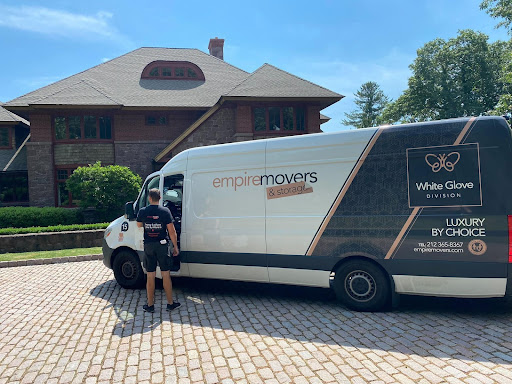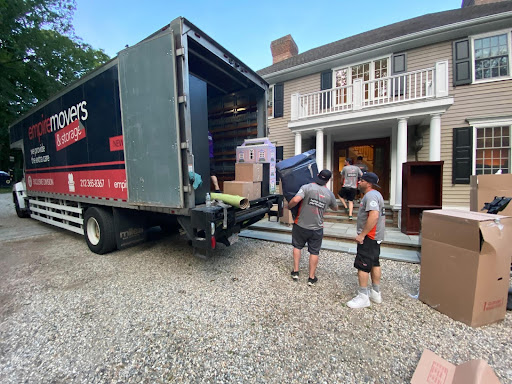
Warehouse Wonders: Optimizing Receiving and Storage for Interior Design Projects
Interior design projects can be complex and difficult, especially when it comes to material storage and management. Interior designers confront a range of challenges when it comes to handling their materials, from receiving and inspecting supplies to maximizing storage space and assuring safety. In this blog post, we’ll look at several creative ways to improve receiving and storage for interior design projects.
Receiving: Best Practices for Interior Designers
When it comes to receiving materials for interior design projects, there are several best practices that can help ensure a smooth and efficient process. These practices include:
Comprehensive Inspection: Any materials arriving must be thoroughly inspected for damage or flaws. This includes examining for scratches, dents, and other signs of damage that could impair the quality of the final product. By spotting problems early on, you can take steps to remedy them while keeping the project’s impact to a minimum.
Incoming Item Categorization: It is critical for project management to keep track of what has been received and what still needs to be delivered. Categorizing incoming items by kind, quantity, and other vital criteria will assist you in staying organized and ensuring that everything is in order.
Utilizing Digital Tools: Inventory management software can be quite beneficial to interior designers. Tracking your inventory with digital technology allows you to swiftly manage and organize your materials. This can help you avoid over-ordering and stockouts, as well as ensure you have everything you need to complete your project on time and on budget.
Maintaining Communication: Communication is essential when it comes to getting supplies for interior design projects. Maintaining open lines of communication with suppliers, vendors, and other stakeholders is part of this. You may avoid delays and ensure a smooth operation by keeping everyone up to date on delivery dates, amounts, and other relevant information.
You can streamline your receiving process and set the stage for a successful interior design project by following these best practices.
After you’ve gotten your supplies, the following step is to organize them so that they take up as little room as possible while still allowing you to easily reach what you need. When it comes to storage solutions, you need to be imaginative as an interior designer, especially if you have a small warehouse or storage area. There are numerous inventive storage options available to assist you to minimize your storage space while keeping your stuff organized and conveniently accessible.
Modular Storage Systems: Interior designers can use modular storage solutions since they are adaptable and configurable. These systems can be configured in a variety of ways, allowing you to tailor a storage solution to your exact requirements. You can add or remove shelves, cabinets, and drawers as your inventory changes with modular storage, ensuring that you always have enough space to keep your supplies.
Mobile Storage Solutions: If you need to transport your items regularly, mobile storage solutions may be the best option for you. Rolling racks and carts are a good choice for storing materials that must be carried from one area to another. They can also be utilized to hold products that are currently in use, letting you keep your workspace orderly and clutter-free.

Vertical Storage: When it comes to maximizing space, vertical storage is a wise decision. Vertical storage solutions, such as vertical shelving or hanging storage, can help you make the most of your available space. By leveraging vertical space, you may free up floor space and make more place for other goods and equipment.
Specialty Storage: If you work with specific materials or equipment, customized storage may be the best alternative. If you work with fabrics, for example, you might want to consider using a fabric roll storage system that allows you to store your fabric rolls neatly and efficiently. If you work with paints or other chemicals, they may need to be stored in specific cabinets or shelves designed to keep them safe and secure.
Examine these unique storage solutions and select the best one for your needs to create an efficient and effective storage system. This will not only help with resource organization but will also save you time and money in the long term.
Safety: Essential Considerations for Interior Designers

As an interior designer, you work with a variety of materials on a daily basis. From fabrics and furniture to painting and other chemicals, you must be aware of the various safety concerns that come with handling these products. Safety is an important priority for any interior designer working with materials, and there are several critical elements to keep in mind when it comes to establishing a safe working environment in your warehouse or storage space.
Lifting Techniques: A significant source of job injuries is heavy lifting. You may need to lift and carry heavy objects as an interior designer, such as furniture or equipment. To reduce the danger of harm, suitable lifting procedures must be used. This includes bending your knees, keeping your back straight, and lifting the burden with your leg muscles rather than your back.
Protection Equipment: Depending on the materials you’re working with, you may need to wear gloves, safety glasses, or respiratory protection. This can help protect you from hazardous substances or injuries caused by sharp items.
A well-lit workspace is critical for guaranteeing safety in your warehouse or storage area. Inadequate lighting can cause accidents and injuries, particularly while working with sharp or heavy materials. Check that your workspace is well-lit and that all areas are visible and unobstructed.
Identification of Potential Hazards: Take the time to identify potential dangers in your workplace, such as tripping hazards or sharp objects. This can assist you in taking precautionary measures, such as keeping paths clean and storing sharp objects in specified areas.
You can create a safe working environment in your warehouse or storage space by following these important guidelines. This not only safeguards you and your staff but also ensures that your goods are handled safely and in good shape.
Organization: Streamlining Your Storage System

You have a lot of items to keep track of as an interior designer in your storage system, from textiles and finishes to furniture and accessories. When your storage system is chaotic, it can be overwhelming to try to find what you need when you need it. That is why having an effective organization system in place is critical for streamlining your storage system and making it easier to discover what you need immediately.
Color-coding: Color-coding your resources is an excellent approach for organizing them. By designating different colors for different types of items, you may quickly discover what you need by looking for the proper color. Green, for example, could be used for fabrics, blue for finishes, and yellow for accessories.
Labeling: Another excellent organizational strategy. You can quickly discover the resources you require by labeling your storage containers, shelves, or drawers with the contents within. This can save time and save irritation when looking for a specific item.
Computerized inventory systems: An efficient way of tracking and organizing your materials. You can establish a digital inventory of all the materials in your storage system by using inventory management software. This enables you to search for items fast using keywords or categories, making it easier to find what you need when you need it.
Streamline Your System: It is critical to assess your storage system on a regular basis and make changes to streamline it. This may entail restructuring your things based on how frequently they are used, discarding obsolete goods, or investing in additional storage options to meet growth.
You can save time and reduce stress in your interior design operations by following these organization ideas and optimizing your storage system. This can lead to increased productivity and more efficient time management, which can lead to increased profitability for your firm.
Interior Design Storage Solutions

Prospective clients who search for “interior design storage solutions” are probably looking for advice on how to optimize their storage systems for their projects. You can portray yourself as an expert in the industry by developing content that targets this high-intent keyword.
Conclusion
It is critical for the success of interior design projects to optimize receiving and storage. You may develop an efficient and successful storage system by adhering to best practices for receiving, investigating novel storage solutions, prioritizing safety, and streamlining your organization system. Whether you’re working on a large commercial project or a modest domestic one. Using these strategies and techniques can help you manage your supplies more successfully and reduce stress throughout the project. Contact Empire Movers & Storage to learn more.







